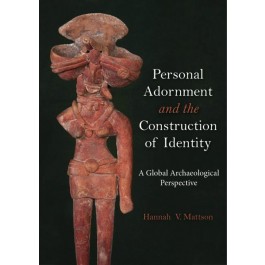Personal Adornment and the Construction of Identity: A Global Archaeological Perspective
Departmental News
Posted: Sep 07, 2021 - 01:00pm

Dr. Hannah Mattson, Assistant Professor of Archaeology, has published her new edited volume Personal Adornment and the Construction of Identity: A Global Archaeological Perspective with Oxbow Press.
Objects of adornment have been a subject of archaeological, historical, and ethnographic study for well over a century. Within archaeology, personal ornaments have traditionally been viewed as decorative embellishments associated with status and wealth, materializations of power relations and social strategies, or markers of underlying social categories such as those related to gender, class, and ethnic affiliation. Personal Adornment and the Construction of Identity seeks to understand these artefacts not as signals of steady, pre-existing cultural units and relations, but as important components in the active and contingent constitution of identities. Drawing on contemporary scholarship on materiality and relationality in archaeological and social theory, this book uses one genre of material culture - items of bodily adornment - to illustrate how humans and objects construct one another.
Providing case studies spanning 10 countries, three continents, and more than 9,000 years of human history, the authors demonstrate the myriad and dynamic ways personal ornaments were intertwined with embodied practice and identity performativity, the creation and remaking of social memories, and relational collections of persons, materials, and practices in the past. The authors’ careful analyses of production methods and composition, curation/heirlooming and reworking, decorative attributes and iconography, position within assemblages, and depositional context illuminate the varied material and relational axes along which objects of adornment contained social value and meaning. When paired with the broad temporal and geographic scope collectively represented by these studies, we gain a deeper appreciation for the subtle but vital roles these items played in human lives. Learn more
